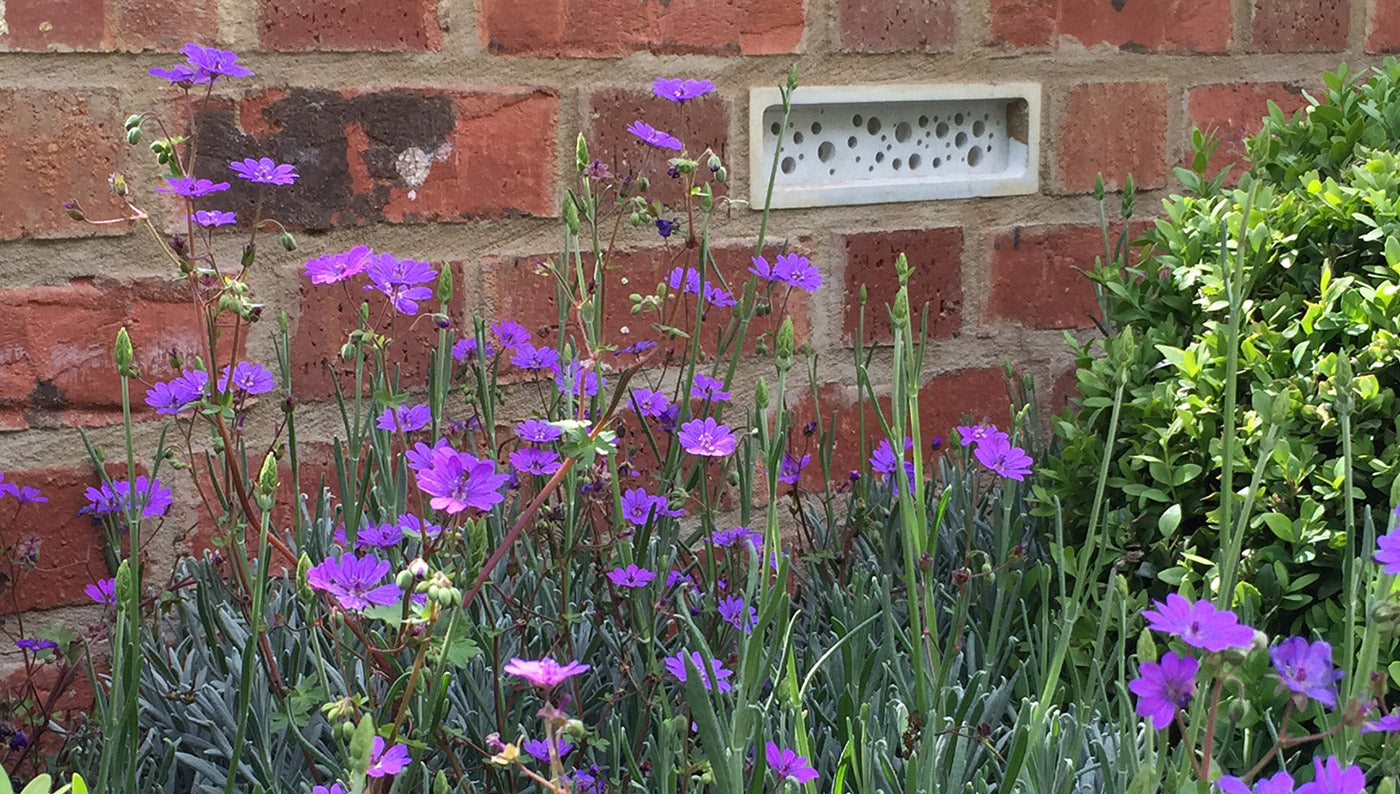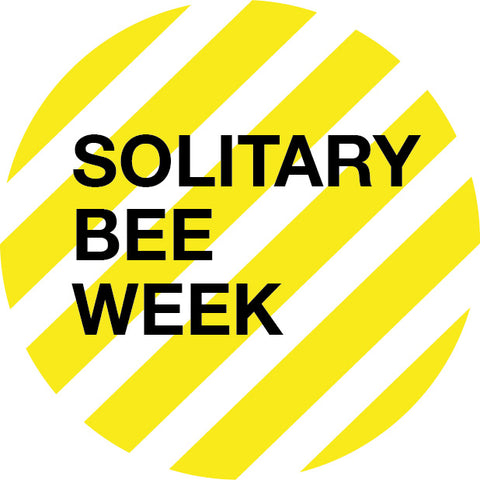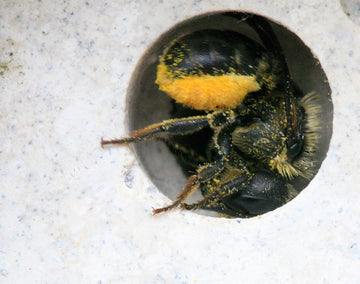5 things you need to know about solitary bees.
1. Solitary bees are different from honey bees and bumble bees.
Solitary bees are not simply bees who have left the hive and are now alone. There are over 200 species of solitary bee and, as the name suggests, they live alone, although in truth they often nest close to one another. They do not produce honey, do not have a queen and do not live in hives.
 2. Pollinators are responsible for around a third of all food we eat.
2. Pollinators are responsible for around a third of all food we eat.
Pollinators, including solitary bees, carry out a vital role in pollinating our crops, and also flowers and trees. In some parts of China pollination is already being undertaken by hand using paintbrushes because there are no bees left to do it naturally. We used to think that honey bees were the biggest contributors to crop pollination but that simply isn't the case today, all types of bees are important. 
3. Solitary bees are non-aggressive.
Because solitary bees do not have a store of honey to protect they are non-aggressive, meaning they are safe around pets and children. The males generally have no sting and the females will only sting if handled roughly or trod on. Perfect therefore to encourage into your garden or allotment or new build development.

4. They have a short, but busy, life cycle.
Generally (across the species) solitary bees emerge from their nests in the spring. Males emerge first and, after feeding, they hang around the nest waiting for the females. Once mating is complete the males die fairly quickly, what a life! After mating the females will begin the process of nesting, selecting a suitable site, constructing the nest and laying anything between 1 and 20 eggs. The eggs will hatch into larvae, which feed on pollen and nectar that the female has stored within each nest. The larvae develop and pupate, emerging the following spring (or later in the year depending on species) and repeating the cycle.
5. Their habitat is under increasing threat.
There are many factors in declining solitary bee numbers, including increased use of chemicals in farming, fewer wildflower meadows, and less suitable habitat. As fields become bigger we lose more hedgerows, which used to provide ample homes to a wide range of wildlife. Also as we build more and more properties and landscape our gardens we unwittingly destroy habitat and nests as we do so. We developed the bee brick as a means of increasing consideration for the habitat of cavity-nesting solitary bees, by creating a possible nesting site for them in each new development, garden or wall.

Solitary Bee Week
If you'd like to know more about Solitary Bees or fancy helping us spread the word about these brilliant pollinators then check out Solitary Bee Week, a week of action and awareness we organised to raise awareness of these 'other' bees.



41 comments
My garden is planted for bees and last year we had lots. This year we had a few earlier in the season but there are almost none now which I assume is because of the cold and wet weather. Am worried…
why do hornets attack solitary bees i recently saved a bee from a hornet gave it sugar water put it on a flower to rest then it flew away the hornet had the bee on its back i brushed it off the bee with a small soft paint brush
So to answer Sonia’s question: the bees don’t like to make nests in holes used be another bee the year before (yes even if it hatched in it)
I have a lot of success drilling 1/4 inch holes into wooden fence posts or logs around the garden I also found that they LOVE bamboo and you can cut up bamboo canes 6 inch long 1/4inch thick and place them in small bundles around the house and outdoor structures. They love them and are easy to replace after they have been used.
Tracie that little bee won’t be coming back next year. She will die.
Garry you should also drill holes into the stump anywhere on its sides. Just try and keep them parallel to the ground as anything vertical will fill with water and drown them.
Jon they like quiet places corners and preferably dry.
Thanks everyone for wanting to house bees. They rock.
I feel a solitary bee,spotted in the house is some sort of a messenger…either good or bad news…wish some one can clarify the the theory
hi i have a black and yellow solitary bee who has made a home in my bedroom, i dont mind but im a bit concerned about how many babies we are going to have and how do i prevent this little bee coming back next year as she is so determined she managed to squeese through a closed window